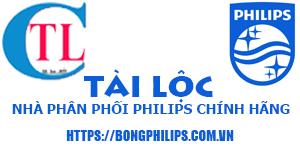Tin tức chung
What Are Varicose Veins? Comprehending the Causes, Effects, and Therapy
Varicose blood vessels are a common condition that affects countless individuals worldwide. They are puffy and twisted blood vessels that usually appear on the legs and can trigger discomfort, discomfort, and aesthetic worries. This write-up aims to supply a detailed understanding of varicose veins, including their causes, signs and symptoms, and readily available treatment options.
Sources Of Varicose Veins
Varicose blood vessels occur when the valves in the blood vessels breakdown, leading to blood merging and the blood vessels coming to be bigger and twisted. Several aspects add to the advancement of varicose capillaries:
1. Family members Background: Genes plays a significant function in varicose veins. If your moms and dads or close relatives have actually had varicose blood vessels, there is a greater chance that you might establish them as well.
2. Age: The risk of varicose veins increases with age. As individuals grow older, the blood vessels lose their elasticity, making them much more vulnerable to damage and blockages.
3. Sex: Women are more probable to establish varicose veins than men. Hormone modifications during pregnancy, menopause, and the use of hormone birth control can add to the condition.
4. Excessive weight: Being obese or obese puts extra pressure on the capillaries, making them extra susceptible to coming to be varicose.
5. Extended Standing or Sitting: Jobs or tasks that need long periods of standing or sitting can enhance the threat of establishing varicose blood vessels.
- Occupations such as nursing, teaching, and manufacturing facility work typically involve long term durations of standing, placing strain on the veins.
- Resting for prolonged durations, especially with gone across legs, can affect blood flow and contribute to the development of varicose blood vessels.
6. Deep Blood Vessel Apoplexy (DVT): A background of deep blood vessel thrombosis, a blood clot in the deep veins of the legs, can enhance the probability of creating varicose veins.
Symptoms of Varicose Veins
Varicose veins can present different symptoms, consisting of:
1. Noticeable Veins: The most evident indicator of varicose veins is the noticeable look of twisted, bulging blood vessels on the legs.
2. Pain and Pain: urotrin cruz verde Many individuals with varicose capillaries experience pain, thickness, or aching in the impacted locations. This pain may aggravate after long term durations of standing or sitting.
3. Swelling and Edema: Varicose capillaries can cause swelling in the legs and ankle joints because of poor blood flow.
4. Skin Modifications: The skin around varicose capillaries may become discolored, dry, and itchy. In many cases, the skin can end up being thin and conveniently harmed.
5. Issues: In serious situations, varicose capillaries can cause issues such as abscess, bleeding, and embolism.
Therapy Options for Varicose Veins
Fortunately, several therapy options are available to take care of varicose blood vessels. The option of treatment depends on the extent of the problem and individual choices:
- 1. Way of living Modifications: Making certain way of living modifications can help minimize signs and symptoms and protect against the worsening of varicose blood vessels.
- Preserving a healthy weight, working out consistently, raising the legs, and staying clear of prolonged sitting or standing can advertise much better blood circulation.
2. Compression Stockings: Compression stockings are specifically made to apply pressure to the legs, boosting blood circulation and minimizing signs.
3. Sclerotherapy: This non-surgical therapy entails injecting a remedy straight into the influenced capillaries, causing them to collapse and discolor gradually.
4. Laser Therapy: Laser treatment makes use of light power to heat and damage the damaged veins, slowly fading them away.
5. Endovenous Ablation: This minimally intrusive treatment entails putting a catheter into the influenced capillary and using radiofrequency or laser energy to close it off.
6. Capillary Stripping: In extra severe situations, surgical removal of the impacted veins might be necessary. This procedure is referred to as vein stripping.
Stopping Varicose Veins
While varicose veins might not be totally preventable, certain measures can lower the risk of creating them:
- Routine Exercise: Engaging in routine physical activity, such as walking or cardiobalance fake swimming, can boost flow and strengthen leg muscular tissues.
- Preserving a Healthy And Balanced Weight: Maintaining a healthy and balanced body weight minimizes the stress on the capillaries.
- Staying Clear Of Long Term Sitting or Standing: Taking breaks and moving routinely can aid stop blood pooling in the legs.
- Elevating the Legs: Elevating the legs over heart degree for short periods can assist enhance blood flow.
- Putting On Compression Stockings: Compression stockings can provide support to the capillaries and minimize the danger of establishing varicose capillaries.
Final thought
Varicose blood vessels are a widespread problem that can create discomfort and influence the lifestyle for numerous individuals. Understanding the causes, signs, and available therapy choices is crucial in managing and protecting against the development of varicose blood vessels. By embracing a healthy and balanced lifestyle, looking for appropriate clinical interventions, and taking preventive measures, individuals can effectively take care of varicose blood vessels and decrease their effect on day-to-day live.






